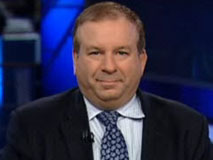
Gold prices are currently trading at the record level of $1,100/oz. Looking at the long-term loss of value in the dollar, and the damage caused by the financial excesses of the last quarter century, the question is whether this is just the kickoff phase for the precious metal. Many experts expect gold to trade above $1,300 by the first quarter of 2010. They ultimately see the correlation between peak gold and weak dollar resulting in gold above $2K.
Gluskin Sheff Chief economist David Rosenberg thinks that as the world keeps losing confidence in paper currencies, and as investors worldwide seek safe havens from a declining greenback, there are reasons to be bullish on gold:
Here is Rosenberg’s latest piece on: This Is How We Get To $2,750 Gold
“Another reason to be bullish on gold is the recurring trade spats. Indeed, this is good news for the commodity complex as security of supply resurfaces — see China Attacks U.S. in Fresh Trade Spat” on page 2 of the weekend FT. If it’s not Chinese-made tires fingered by an increasingly protectionist U.S.A. one day, it’s steel pipe the next. This latest anti-dumping measure by the United States is facing a severe rebuke, as per the press reports, in China.
In addition to these trade protectionist actions, there is also the matter of more stimulus measures being undertaken in a mid-term election year at a time when the Treasury is expanding its debt issuance to new records right across the maturity spectrum. All anyone needs to do is have a look at the article Congress’s Blank Check For Housing in the weekend WSJ — to see this happening at a time of 10% budget deficit-to-GDP ratios, had indeed become a bottom-less fiscal pit.
Since the USA will not default, not raise taxes nor cut spending, the only logical recourse will be to print vast sums of U.S. dollars to fund this surreal foray into deficit finance. In other words, reflate. As we keep on saying, under Dr. Bernanke’s tenure, the monetary base has risen twice as much as nominal GDP has and the two lines continue to diverge. At the same time, gold production peaked a decade ago. It’s all about scarcity of supply, and as Sri Lanka’s central bank just reminded us, and India before that, there are buyers with deep pockets lining up to diversify into bullion. Here are the ‘what if’ realities stack up:
- If India were to lift is gold share of FX reserves from 6% to 20%, where it was during the strong U.S. dollar policy days of 15 years ago, we estimate that gold would go to $1300/ounce.
- If China were merely to copy what India just did and raise its share to 6%, then gold would go to $1,400/ounce, based on our in-house analysis.
- If the USA were to go back to a 40% ratio of gold reserves to money supply (using the monetary base), where it was a century ago when the Fed was first created, from 17% currently, that would equate to three years’ supply of bullion, and alone take the gold price up to $2,750/ounce, based again on our research on price sensitivities to central bank buying activity.”

No comments:
Post a Comment